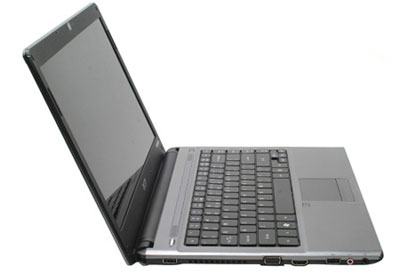A thin notebook and a long battery with a netbook
This fall, laptop buyers will have a headache before choosing: either small and cheap netbooks, or notebooks using power-saving chips (CULV) with higher performance.
Netbooks are a trend that is attracting special attention in the computer market. They usually have screens between 9 and 11 inches (the highest is 12 inches), low power consumption, simple features at attractive prices (under $ 550).
And the CULV notebook, which will appear in the third quarter of 2009, has a slim design with a 12-13 inch screen, a long battery life and is priced at around $ 600-1,000, more expensive than a netbook but works much more efficiently. .
At this point, consumers need to consider the lightweight netbook, the attractive price, but sometimes inconvenient to use and thin notebook, the equivalent of the usual latpop feature but higher price.

Acer Timeline - the highly regarded CULV notebook.
Some experts say users will not want to buy netbooks anymore, they just need to spend an additional $ 100-300 to own a complete notebook. Intel also directed people's attention to the CULV chip, although they played a key role in the netbook trend. "If you want a thin, light computer, you don't need to buy a netbook. Notebook CULV is affordable and has more features," Intel CEO Paul Otellini said.
No studies have shown that people buy netbooks for cheap or because of the need for a small device during travel, but perhaps few people like a device with a screen, a small keyboard and limited features. The manufacturer Acer, despite being very successful in the netbook market with the Aspire One line, still launched the Timeline using the CULV chip. The Timeline CULV version (1810T) is equipped with a small 11.6-inch screen like a netbook but works faster than Atom, supports HD content, 4 GB RAM, HDMI port, standard Wi-Fi and the ability to upgrade Windows 7.
So many tech experts believe netbooks will be the losers when the CULV notebook is born.
 Laptop sold in June / September
Laptop sold in June / September Gateway's $ 300 netbook
Gateway's $ 300 netbook Dell Adamo discounted 500 USD
Dell Adamo discounted 500 USD Eee PC 1008HA adds 2 colors to blue and pink
Eee PC 1008HA adds 2 colors to blue and pink What's a good 15-inch MacBook Pro?
What's a good 15-inch MacBook Pro? HP released two more business laptops
HP released two more business laptops